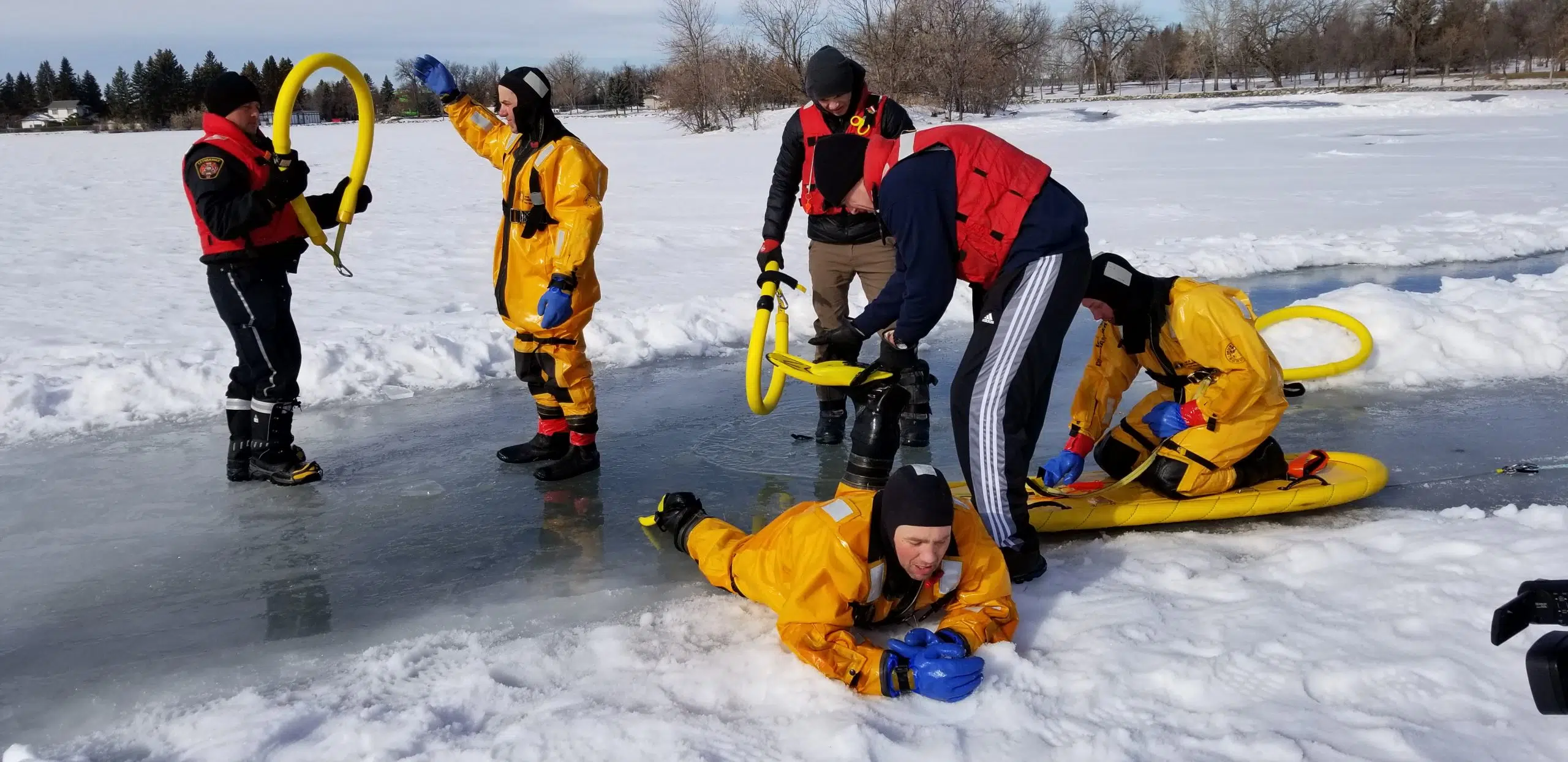
Lethbridge emergency services stress dangers of icy surfaces as temperatures rise
LETHBRIDGE, AB – With temperatures rising, ice is getting thinner.
At Henderson Lake on Friday, Lethbridge Fire and Emergency Services held an ice rescue training exercise, which members of the media were able to attend.
As part of the exercise, fire crews drilled two large holes into the water at the lake. Participants crawled their way, while holding an ice-rescue board, towards and across the first hole of water on route to retrieving a “victim”, played by a fellow team member, trapped in the second area of exposed water.
The “victim” is then lifted on to the board along with the rescuer and they are dragged back to the start of the course by their team members.


